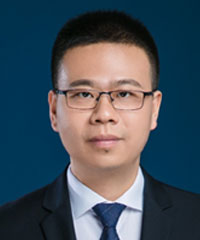
Short Bio:
Zhimeng Zhong received the B.E., M.S., and Ph.D. degrees from Xi'an Jiaotong University, Xi'an, China, in 2002, 2005, and 2008, respectively, all in electronic engineering.
He joined Huawei Technologies CO., LTD from 2009, and about 11 years experiences on wireless communication system research and development.
Dr. Zhong is a senior member of the IEEE. In these years, he mainly focused on wireless channel measurement, channel modelling, and MIMO algorithm & system design. He is the team leader of wireless channel research in Huawei. Especially, he was in charge of the 3GPP 5G channel model standardization work in Huawei, and gave contributions on 3GPP mm-wave channel model, V2V channel model, and IIOT Channel model standardization. Recently, he also focused on Massive MIMO algorithm design based on some special channel characteristics and machine learning technologies.
Speech Title: Wireless channel model evolution from 5G to beyond 5G
Abstract:
For every wireless communication generation, it will have new requirements for channel model. The channel model evolution driving forces are mainly from three parts: 1) new spectrums; 2) new physical layer technologies; 3) new scenarios. From 5G to B5G (beyond 5G), the frequency bands will be extended from 100G Hz to terahertz (THz), and the THz bands’ applications will be highly depended on these frequency bands’ channel characteristics, such as path loss, penetration loss, etc. From new physical layer technologies point of view, the massive MIMO structure has been widely used on 5G base station in recent years, so the ultra massive MIMO system with more antennas will be one promising new massive MIMO structure. Moreover, the intelligent reflecting surface (IRS) has been one popular topic which can be deployed to change wireless environments. Moreover, 5G enables communication with unprecedented reliability, very low latencies, and massive connectivity, many applications in different vertical domains, including the automotive, healthcare, agriculture, and manufacturing, have been thus considered in 5G networks. As the foundation of the communication system design and evaluation, the reasonable wireless channel characteristics and model are needed for these new scenarios. In this talk, we will introduce the recent channel model research results are given, and future research challenges are pointed out as well.
|

